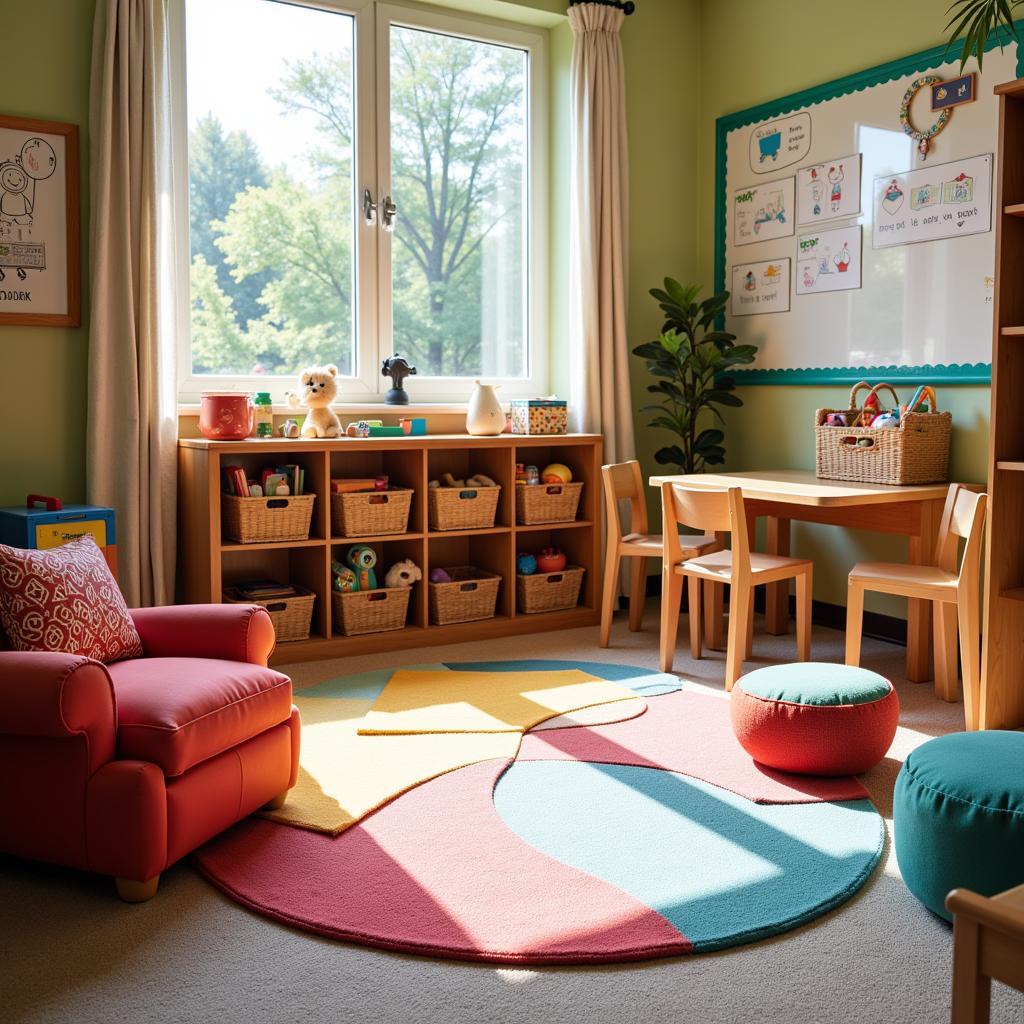“Children are like buds on a branch, knowing how to eat, sleep, and learn is being good.” Play corners in preschool classrooms are the “stage” for children to freely “perform” and explore the world around them in a natural and engaging way. These corners are not just playgrounds but also vital educational environments that help children develop comprehensively in physical, cognitive, linguistic, emotional, and social aspects. Learn more about preschool curriculum exploration.
The Significance of Play Corners in Preschool Classrooms
Play corners play a pivotal role in sparking curiosity, creativity, and learning abilities in children. Each play corner is designed with a specific purpose, aiming to develop one or more different skills. For example, the building corner helps children practice logical thinking, observation skills, and hand-eye coordination. The art corner, on the other hand, is where children are free to express emotions and develop aesthetic talents. Ms. Nguyen Thi Lan, a preschool education expert with over 20 years of experience, once shared in her book “Nurturing Children with Heart”: “Play corners are miniature worlds where children can be themselves, learn, and grow through real-life experiences.”
Popular Types of Play Corners and Their Benefits
There are many different types of play corners, depending on the facilities and curriculum of each school. Some popular play corners include: dramatic play corner, learning corner, nature corner, book corner, and building corner. Each play corner offers unique benefits for children’s development. For instance, the dramatic play corner helps children learn how to communicate, cooperate, and solve problems. The learning corner helps children become familiar with letters, numbers, and basic concepts. Some preschools highly emphasize building play corners, such as Thien Anh Kindergarten in Binh Thanh District.
I vividly remember the story of Minh, a shy and quiet boy. Since participating in the dramatic play corner, Minh gradually became more active and confident. He enjoyed playing the role of a doctor, taking care of patients. Through such “learning through play” experiences, Minh not only overcame his shyness but also learned how to care and share with others.
Designing Effective Play Corners in Preschool Classrooms
Designing effective play corners is an art. It is necessary to ensure safety, aesthetics, and suitability for children’s age. The play corner space needs to be arranged logically, airy, and clean. Toys and tools need to be carefully selected, ensuring quality and safety for children. The size of toys also needs to be considered, for example, kindergarten stair dimensions need to be appropriate for young children. Mr. Pham Van Hung, a lecturer at the Central Pedagogical College, emphasized in his book “Preschool Teaching Methods”: “Play corners need to be designed flexibly and easily changed to create novelty and stimulate children’s interest.” Learn more about Gia An Kindergarten in District 2.
 A colorful and well-organized play corner in a kindergarten classroom
A colorful and well-organized play corner in a kindergarten classroom
Tips for Parents
Parents can also create play corners for their children at home. Just a small corner, a few simple toys, and you can create a beneficial “playground” for your beloved child. The most important thing is to spend time playing with your child, guiding them to explore and learn through play. Learn more about chef hats for preschoolers.
In conclusion, play corners in preschool classrooms are an indispensable part of children’s comprehensive development. Let’s join hands to create fun and beneficial play corners, helping children “learn through play, play to learn,” and grow up day by day. Please leave a comment and share this article if you find it helpful! You can also explore many other articles on the “TUỔI THƠ” website. Contact us at 0372999999 or visit us at 234 Hao Nam, Hanoi. We have a 24/7 customer care team.